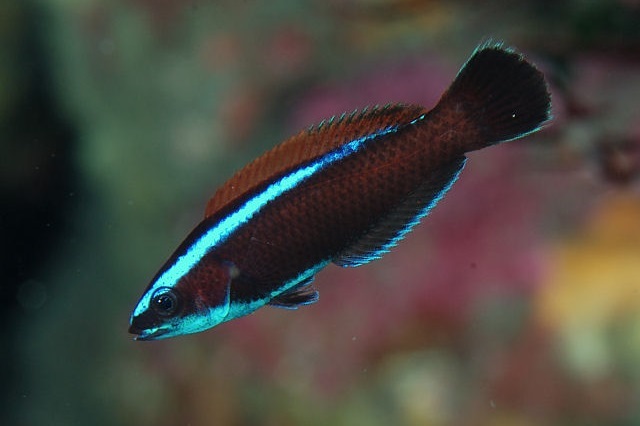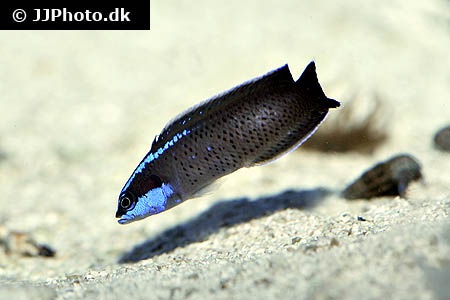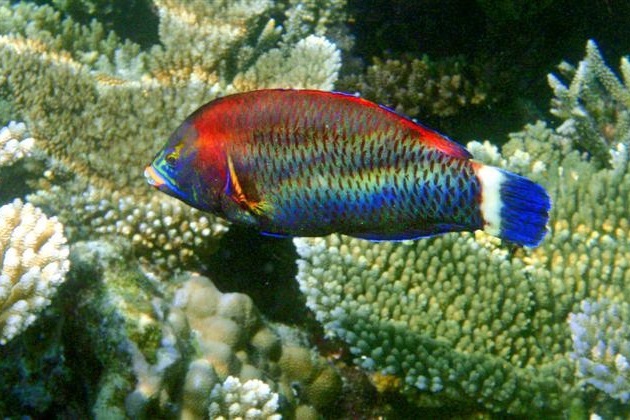Pseudodax moluccanus
| Latin name | Pseudodax moluccanus - (Valenciennes, 1840) |
|---|---|
| Local name | Chiseltooth wrasse |
| Family | Labridae - Pseudodax |
| Origin | East Indian Ocean, West Indian Ocean, Australia, Japan, The Red Sea, Indonesia, East Pacific, Central/West Pacific |
| Max length | 30 cm (11.8") |
| Minimum volume |
500 l (132 gal) |
|---|---|
| Hardiness |
Average |
| Suitable for aquarium |
Suitable with care |
| Reef safe |
Always reef safe |
| Aggressiveness | Mostly peaceful but might be aggressive towards similar species |
| Recommended |
Larger crustaceans (Shrimp, crabs...) Other invertebrates Small crustaceans (Krill, mysis, artemia...) |
|---|---|
| Mostly |
Parasites |
This species is known to jump out of open aquaria.
This species can be a threat towards small crustaceans, e.g. small shrimp.
This species needs a very large aquarium when fully grown.
Exactly how big the aquarium should be is hard to say, but the size of this species is such, that it cannot normally be kept in a home aquarium.
This species must be fed with an appropriately varied diet.
This species is very sensitive during transportation and acclimatizing into the aquarium.
This species needs a minimum of 2 inch (5 cm) of sand in the aquarium bottom, so it can dig itself down when afraid or needing to sleep.
This fish requires feeding several times a day, especially when newly added.
When the fish can find its natural food in the aquarium it requires less frequent feeding.
They can live as a pair provided they are introduced simultaneously.
This species needs good hiding places, for example, between live rocks.
This species revels in swimming and requires an aquarium with ample space.
This species comes in multiple color variations which can make identification problematic.
This species can change gender from female to male.
When a male is needed, a female changes sex and takes on the role.
This species is able to remove parasites from fish.
It does not have a great impact on a large outbreak of marine ich (Cryptocaryon), for example, but it contributes towards keeping fish parasite free.
Constant cleaning can stress the fish in the aquarium, so one should not add this fish which removes parasites, if the fish are already weakened through other causes.
Not all specimens actively clean fish.
Wrasses are nearly always seen in reef aquaria, since many of the species are both attractive and useful in battling a range of unwanted invertebrates like i.e. flatworms, pyramide snails.
These fish live of everything from zooplankton to large crustaceans, sea urchins and the like.
The needs and behaviour of Wrasses vary greatly, so it is vital to familiarize oneself with the specific species before buying one.
| Aquarium trade | Yes |
|---|---|
| Distribution | Indo-Pacific: Red Sea to South Africa (Ref. 35918) and to the Society, Marquesan and Tuamoto islands, north to southern Japan. |
| French common names |
Labre des Moluques |
| German common names |
Meißelzahn junker |
| English common names |
Chiseltooth wrasse Chisel-tooth wrasse |
Scott W. Michael. 2009. Wrasses and Parrotfishes (Reef Fishes Series Book 5) - TFH Publications / Microcosm Ltd. - (English)




